Production of coffee beans coffee output
Coffee trees take 3-5 years from planting to fruiting. 6-10 years of coffee trees are the most likely to bear fruit, about 15-20 years, is the harvest period. Coffee trees are usually bred in nurseries and grow into saplings, and then moved to coffee farms a year later, in full compliance with the way the Arabs planted and cultivated coffee trees. In the first four or five years of its growth, the coffee tree will continue to take root downward, develop its trunk upward, and develop its branches into an umbrella shape so that it can bear rich fruit in the future.
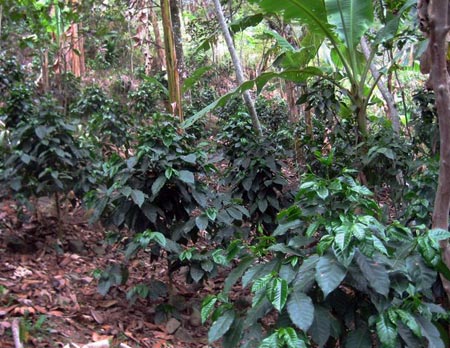
If the coffee is exposed to direct sunlight and the leaf temperature rises, the stomata will close, unable to absorb carbon dioxide, and the coffee tree will stop growing. Some taller trees will be planted next to the coffee tree to avoid being exposed to the sun for a long time. It is usually tropical cash crops such as bananas, betel nuts and so on. Banana and other cash crop trees not only shade, but also through photosynthesis, produce carbohydrates for coffee tree growth energy. As bananas grow fast and can be used as a by-product income, it can be said that coffee and bananas are good brothers of tropical cash crops.
Coffee trees can only grow in the tropics and subtropics. Coffee trees can grow in different climates, soils, elevations and rainfall in the middle of the "coffee belt". Coffee trees thrive in the hot and humid canyons and forest rainforests of Africa; it still produces high-quality coffee beans in cold, foggy, windy Central America; and in the Caribbean, where the climate is changeable, drought and torrential rain, it still blossoms and bears fruit. These factors are the secret that coffee beans have different flavors and a wide variety.
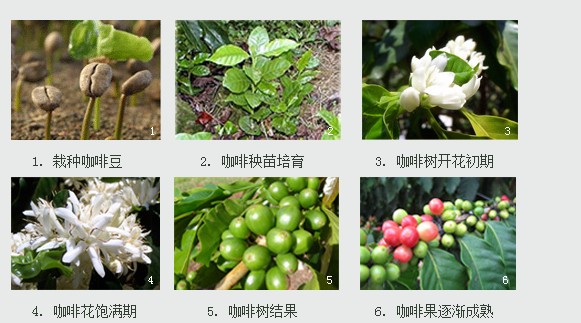
One of the characteristics of a coffee tree is that its fruit can bear fruit several times a year, and another is that flowers and fruits (also known as cherries) coexist at different stages of ripening. The whole coffee harvest is swayed by the vagaries of nature. If the fruit is too ripe, the beans in it will rot. If it is not ripe enough, the beans picked will not ripen by themselves. So bean pickers often go back to the same tree several times to find ripe fruit-it takes only 2 pounds to go back and forth several times, and a typical Arabica coffee tree produces less than 5 kilograms / 11 pounds of fruit in a year. can be made into about 1 kg / 2.2 pounds of coffee beans.

Most of the coffee harvesting in the world is selected by hand, so it is a labor-intensive and seasonally intensive process. Since there are both flowers and fruits on the same branch, the index finger and thumb of the collector are the best tools for collecting ripe berries. Scraping the fruit off a whole branch by hand or using an automated harvester can't tell ripe berries from green berries.
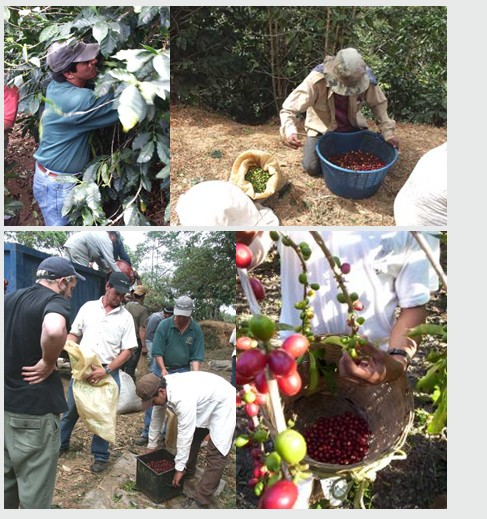
Coffee farmers who produce low-grade coffee beans like to use labor-saving methods to harvest beans, but in this way, because the quality is not pure, it impairs the flavor of coffee and lowers the grade of coffee. The way to pick coffee beans in some parts of Africa is to shake coffee trees, shake the fruit off the ground, and pick it up from the ground before the fruit is injured and rotten. Secondary coffee is produced in most parts of Brazil, where coffee is picked by plucking all the leaves, flowers, overheated and green fruits from the branches at a time, and it takes two years for such damaged coffee trees to return to normal.
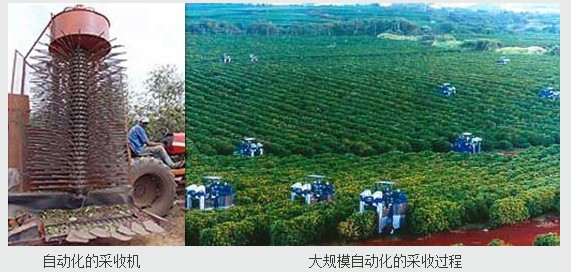
When the mature bright red coffee "cherry" is to be turned into a series of raw coffee beans, it needs to go through a series of processing procedures, and the next issue will introduce the processing process in detail.
Important Notice :
前街咖啡 FrontStreet Coffee has moved to new addredd:
FrontStreet Coffee Address: 315,Donghua East Road,GuangZhou
Tel:020 38364473
- Prev
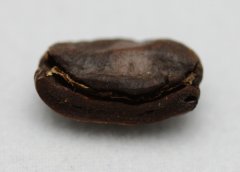
Look, hear, ask and buy high quality coffee beans
Cut, is through pinching, cutting, chewing and other methods to quickly determine the general taste, freshness and baking uniformity of coffee beans. Through this step and the combination of watching and smelling, we can accurately judge whether the coffee beans have just been baked, and the roasting level of the coffee beans will be at a glance. Here are a few techniques one by one. To pinch is to grab a few coffee beans
- Next
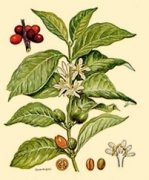
Coffee beans Coffee
There are about 60 species of coffee in the world, of which only 25 species are cultivated to make coffee, of which only 4 species are used as commercial coffee: large fruit coffee (Coffea liberica), medium fruit coffee (Coffea canephora), small fruit coffee (Coffea arabica) and high yield coffee (Coffea dewevrei). These are botanical names. Coffee in the world at present
Related
- Guji coffee producing area of Guji, Ethiopia: Humbela, Shakiso, Wulaga
- What is the most expensive variety of Qiloso in BOP multi-variety group?
- How to store the coffee beans bought home?
- Why are Yemeni coffee beans so rare now?
- Ethiopian Sidamo all Red Fruit Sun Sun Santa Vini Coffee beans
- SOE is mostly sour? What does it mean? Is it a single bean? what's the difference between it and Italian blending?
- Is Italian coffee beans suitable for making hand-brewed coffee?
- How to choose coffee beans when making cold coffee? What kind of coffee beans are suitable for making cold coffee?
- Just entered the pit to make coffee, what kind of coffee beans should be chosen?
- Can only Japan buy real Blue Mountain Coffee? What are authentic Jamaican Blue Mountain coffee beans?

